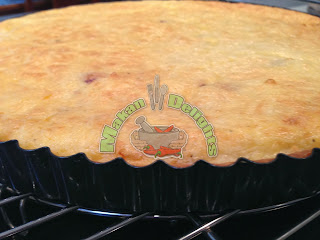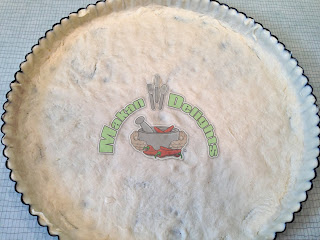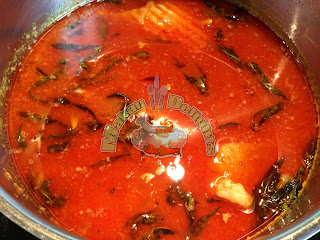A typical spicy Singaporean dish which is famous among both locals and tourists. I prepared the sambal (chilli) paste first, then spread it evenly on the stingray before barbecuing. White fish filets can be used if you cannot find any stingray.
Blended Ingredients for Sambal Paste (for a small to medium-sized stingray):
65 stalks dried chillies, to be deseeded (do not deseed if you want the sambal to be extra spicy), cut into pieces and boiled with water in a pot until a bit soft
4 big onions, to be peeled and sliced
10 pips of garlic (small), to be peeled and sliced
2.5 cm fresh turmeric, to be peeled and sliced
2.5 cm fresh ginger, to be peeled and sliced
1 tsp roasted belacan
1 tbsp laksa leaves (daun kesom)
Note: Blend or pound the above ingredients into a fine paste.
5 kefir lime leaves (daun limau purut) - you can use either fresh or dried ones
2 pcs ginger flower (bunga kantan), to be sliced finely - only the bulbs
a handful laksa leaves (daun kesom)
2 stalks lemon grass (serai), to be crushed at the roots
6 tbsp cooking oil
salt & sugar to taste
fresh stingray, to be washed and dried with paper towels
salt & juice from 1 calamansi lime
banana leaves, to be washed and dried with paper towels
4 calamansi limes, to be washed and cut into halves (garnishing)
Method:
Add a little salt and the juice of one lime to stingray. Mix well and leave aside. Before using, rinse with cold water and pat dry with paper towels.
In a wok, heat oil over medium heat. Add blended ingredients together with lemon grass, kefir leaves and sliced ginger flower. Stir fry until the paste is separated from the oil. This step will take about 15 to 20 minutes. Then, add salt and sugar to taste. Lastly, add the laksa leaves. Remove from heat and leave aside.
If you are using a barbecue grill, soften the banana leaves by immersing them in boiling water for about 5 minutes. Pat dry banana leaves with kitchen towels. Spread half of sambal paste onto a piece of banana leaf. Place stingray on top and followed by the rest of sambal paste. Spread evenly before wrapping the fish with another piece of banana leaf. Barbecue for about 10 to 20 minutes, depending on the thickness of the stingray.
If you are using the frying pan: Place a piece of banana leaf onto a large frying pan. Spread half of sambal paste evenly. Then, place stingray on top and followed by the rest of sambal paste. Spread evenly. Cover with lid and cook over low/medium heat for about 10 to 20 minutes, depending on the thickness of the stingray.
Important note: Do keep watch on the heat in order that the stingray does not get burnt.
Serve hot garnished with calamansi limes. Best eaten with rice and a
fried kangkong side dish.
Bon Appetit!

















































